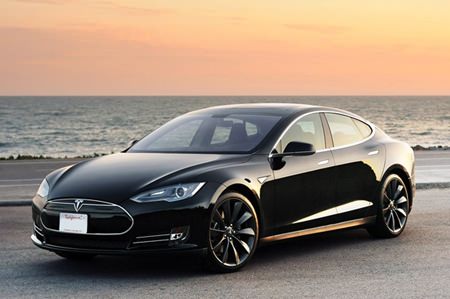Many conflicting headlines in the business pages of the newspapers these days. On one side are the traditionalists and on the other the ‘new wave’. The traditionalists are stating that there is enough fossil fuel to go around, and by 2014, the demand will have actually increased, and what is even more important, the supply will still be there. On the other side of the coin, the new wave followers are thought of as the prophets of doom as they call out “the end of the oil supplies is coming”, but there is salvation, called ‘electric’ power.
At this early juncture I shall not get involved in the ‘global warming’ issue, other than to say it has nothing to do with the debate on global energy supplies vis-à-vis oil and electric. In fact, I am prepared to go down on record that ‘global warming’ is today’s Y2K scam – and scam that certainly was.
 Tesla Model S
Tesla Model S
Electric motor cars have not taken off as it was predicted. Threats that there would be no more oil pushed some people into cars like the Toyota Prius; however, it has become increasingly obvious that there is enough oil for my lifetime – and yours!
Global consumer demand for hybrid and electric vehicles looks to be overhyped and is likely to account for only a small proportion of total vehicle sales over the next decade, despite multi-billion-dollar investments and fast-paced development in the car industry, according to a forecast by global marketing information company JD Power and Associates.
In a report titled ‘Drive Green 2020: More Hope than Reality’, JD Power expects that hybrids and EVs will account for just 7.3 percent – or 5.2 million units – of the 70.9 million passenger vehicles forecast to be sold in 2020.
“While considerable interest exists among governments, media and environmentalists in promoting HEVs (hybrid electric vehicles) and BEVs (battery electric vehicles), consumers will ultimately decide whether these vehicles are commercially successful or not,” said JD Power’s senior vice-president of automotive operations, John Humphrey.
“Based on our research of consumer attitudes toward these technologies – and barring significant changes to public policy, including tax incentives and higher fuel economy standards – we don’t anticipate a mass migration to green vehicles in the coming decade.”
In the US, the main players in the electric wars are slashing the price for their electric offerings, and lowering interest rates to make leasing even cheaper. They would not be doing this if customers were standing in a queue for an electric vehicle.
So how many are being sold right now? National US figures reported that total US vehicle sales were 9.1 million for the first seven months of this year. Electric cars? 49,000 only, which is 0.5 percent of total sales.
To try and stimulate sales in the ‘green’ arena, GM have cut USD 5,000 from the price of their Volt, while Daimler Benz have reduced the leasing costs on their electric Smart Fortwo to a deposit of USD 1,995 and monthly repays of USD 139 for 36 months. Renault have already slashed the price on their Leaf, with a USD 6,000 reduction earlier this year.
Despite these major players fighting for the green dollar, the best selling electric car in the US is the Tesla Model S and which sold 12,200 Model S in July.
GM are still very hopeful of an electrifying future, with plans to manufacture 500,000 cars a year (batteries included). Quite frankly, I do not believe it.




